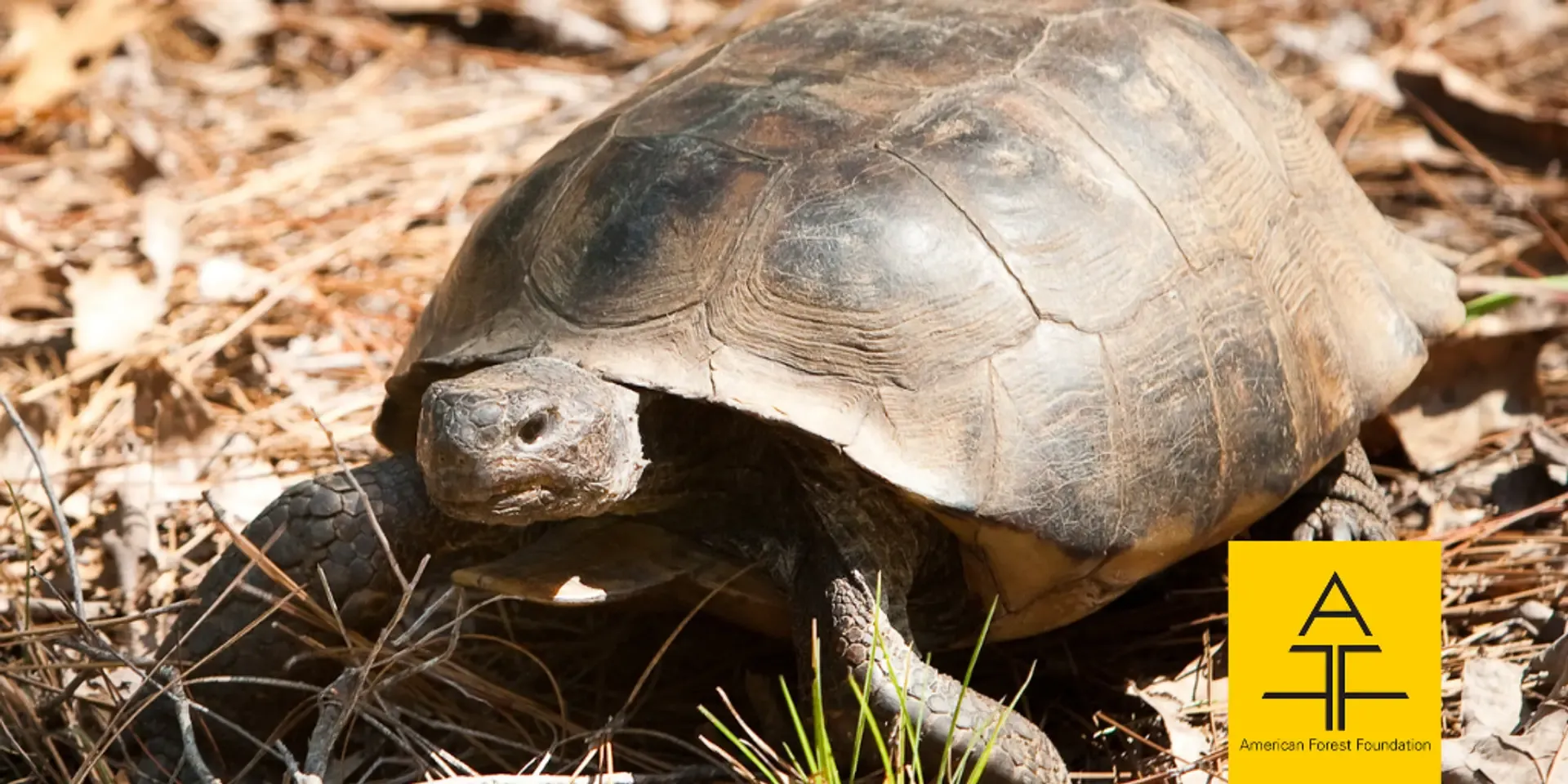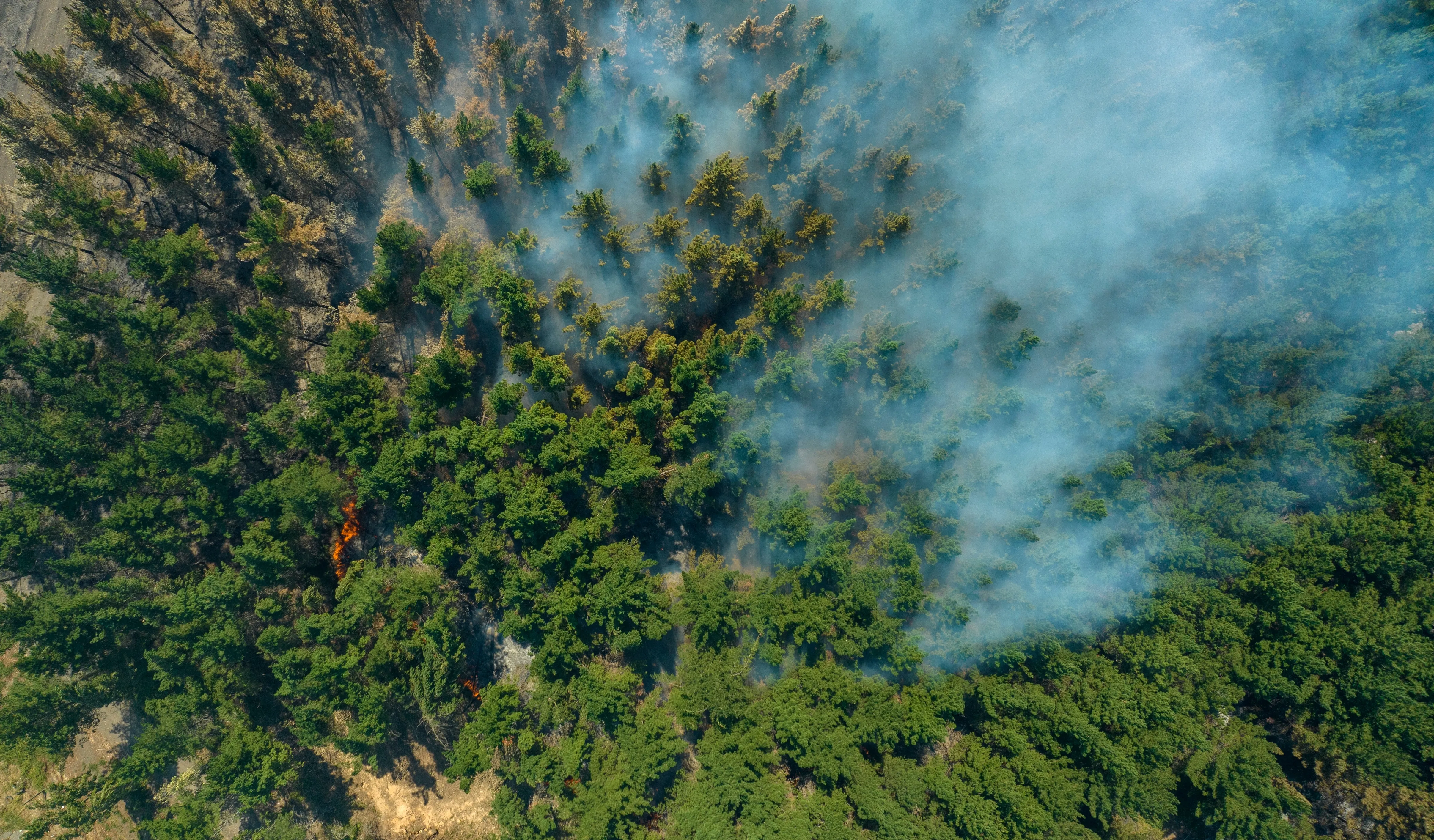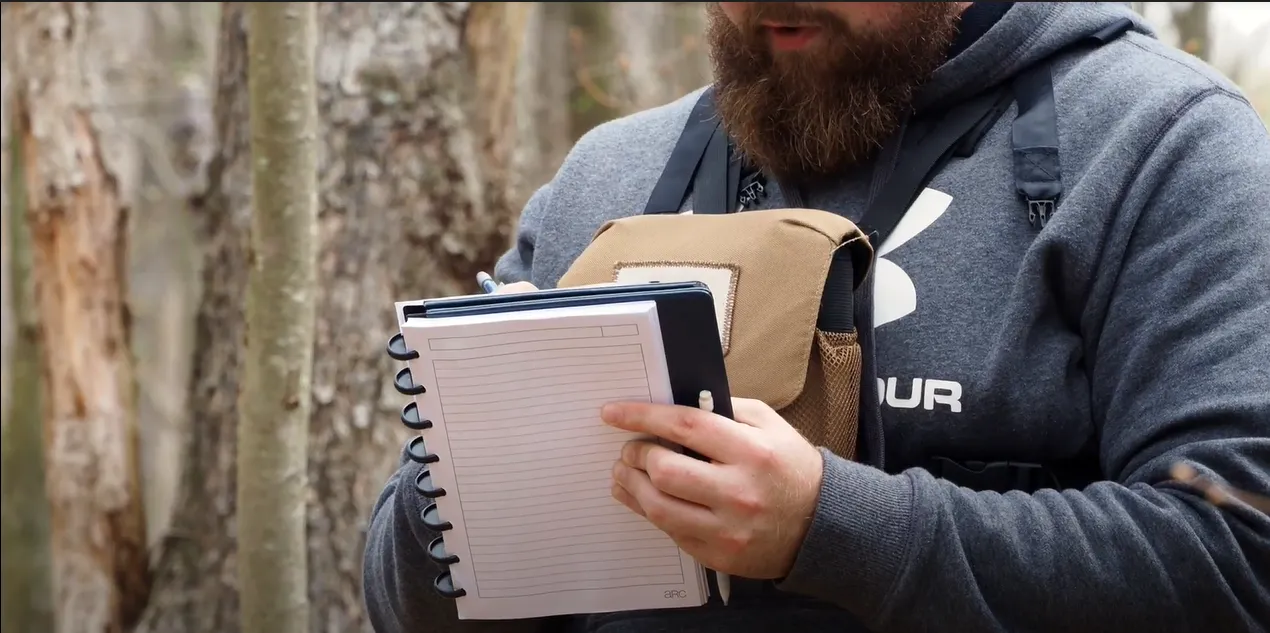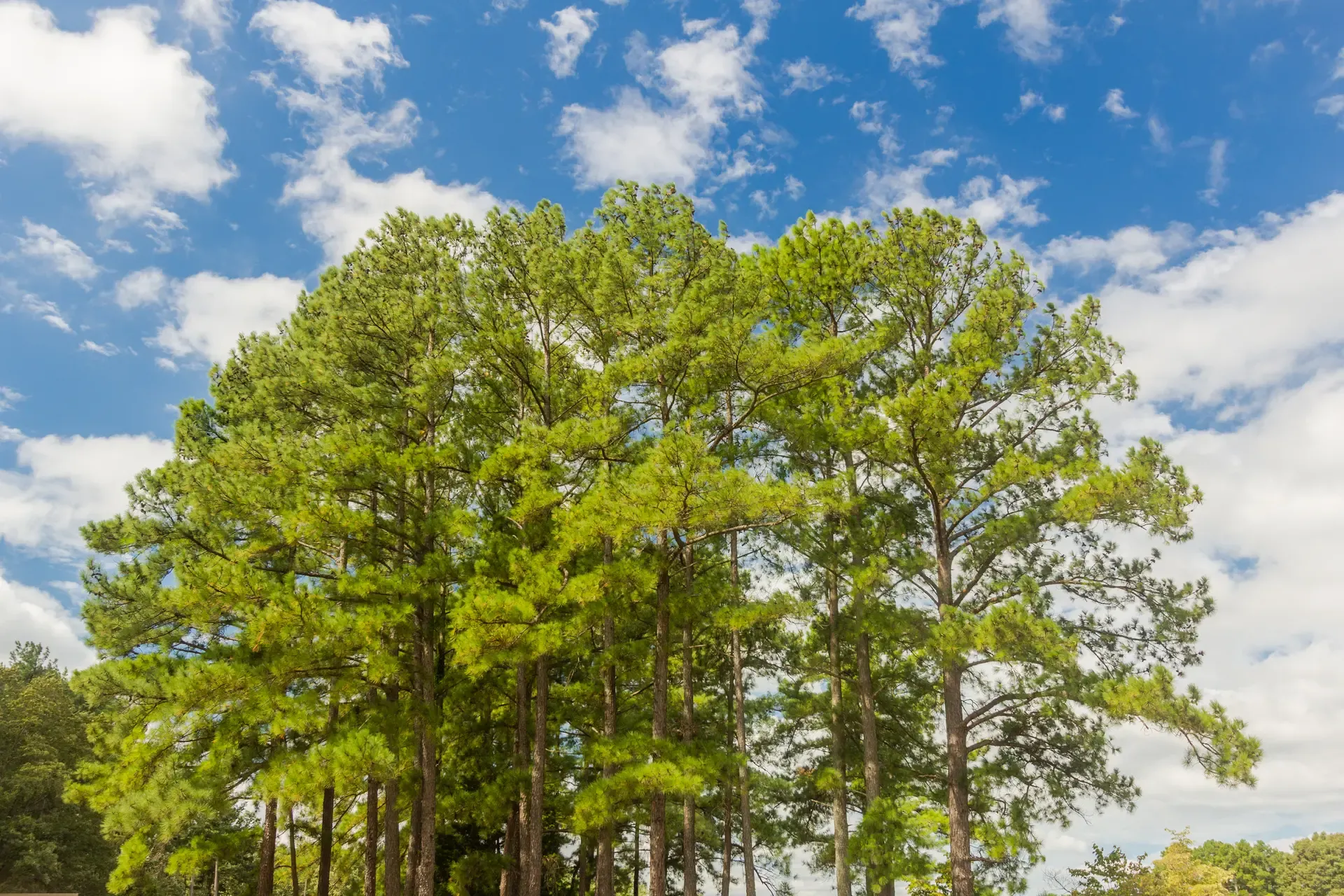Tyler’s Tips for Tortoises

In celebration of Gopher Tortoise Day, April 10th we reached out to specialist Tyler Sibley, Fish and Wildlife Biologist with the Alabama Forestry Association, for ten tips to make Gopher Tortoises feel at home in your forest.
1. Gopher tortoises are great occupants of a working forest, so planting trees, thinning, and prescribed fire are suitable habitat practices to make your Gopher Tortoise feel at home.
2. This fire-adapted species lives in areas of frequent fire and prefers a landscape that is not enclosed by trees.
3. Gopher tortoises are ecosystem engineers, digging burrows in sandy soils to create their homes. Some burrows have been recorded to be 47 feet long, but typically are 15-20 feet long.
4. The entrance of burrows, also called the apron, can be identified by mounds of loose sand. Be aware of these entrances and try to avoid them, if possible.
5. Being an herbivore, their preferred diet consists of grass, leaves, and fruit.
6. Have the perfect basking spot? These cold-blooded reptiles love to sunbathe. Basking is required for warmth and incubation of eggs.
7. These land-dwellers cannot swim, nor are they found in water. If you see a Gopher Tortoise who looks a little heated, he likely won’t be interested in a dip to cool off.
8. Tortoises lay their eggs in sandy soils that have lots of sunlight to keep them warm, usually in the apron of their burrow. Eggs are the size of a ping pong ball and contain 3-15 per clutch. If you see these, leave them untouched. If all goes well, hatchlings will emerge from the nest in late summer.
9. A tortoise burrow is important to your forest habitat, as it provides shelter to 400 other species. Because of the number of species that benefit from burrows made by gopher tortoises, they are considered to be a keystone species. This means that it is a species that is needed in a habitat for many other species to stay healthy and survive.
10. It is alright to move a tortoise off the road if you encounter one, but do not relocate or take it home with you.
"Gopher Tortoises are great occupants of a working forest, so planting trees, thinning, and prescribed fire are suitable habitat practices to make your Gopher Tortoise feel at home." - Tyler Sibley, Alabama Forestry Association
Interested in making your woodlands Gopher Tortoise friendly? Learn more about the work that AFF is doing to protect Gopher Tortoises in the Southern U.S.
This article was originally featured on WoodsCamp’s blog. Visit their site to learn about opportunities available to you and your forest.
Related Articles

December 1, 2025
Tackling Wildfire Through Partnership: AFF’s Stacked Benefits Model
A few miles outside Grass Valley, California, a narrow road winds past homes tucked into dense forest. From the ground, it is easy to forget that these trees are doing something extraordinary. They are standing between the community and the next wildfire.

July 29, 2025
What to Expect from Your Forest Management Plan
Did you know that only about 11% of forest owners have a Forest Management Plan? Programs like the Family Forest Carbon Program (FFCP) are helping change that—making it easier for families to care for their land with confidence. By supporting more landowners in creating these plans, we’re growing a more connected community of people who are committed to the health of their woods—and the future of our forests.

June 3, 2025
Why Wildlife Loves Loblolly—And How These Pines Can Benefit Your Land
A quiet stretch of pine trees can offer more than just scenery—it can provide vital habitat for wildlife across every season. Loblolly pine, the most common native tree species in the Southeast, plays a particularly important role in creating habitat for a wide variety of game and non-game species, from wild turkeys and rabbits to songbirds and squirrels.